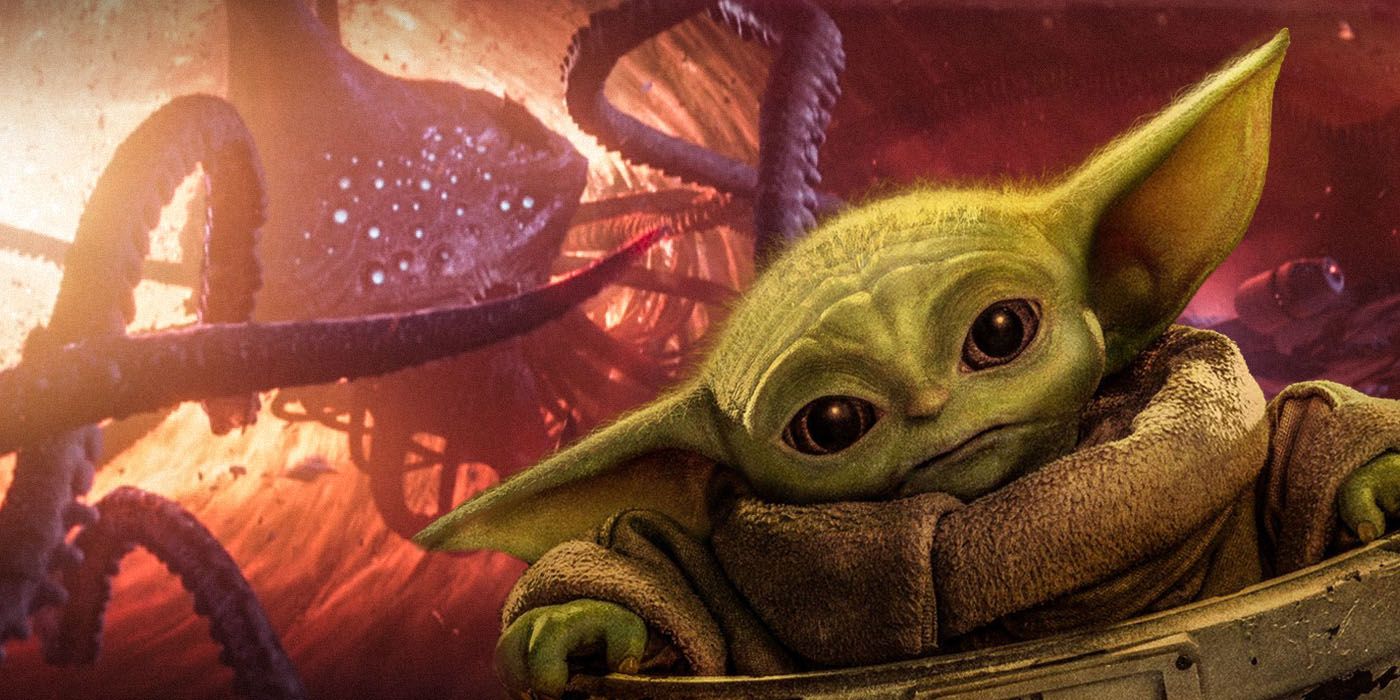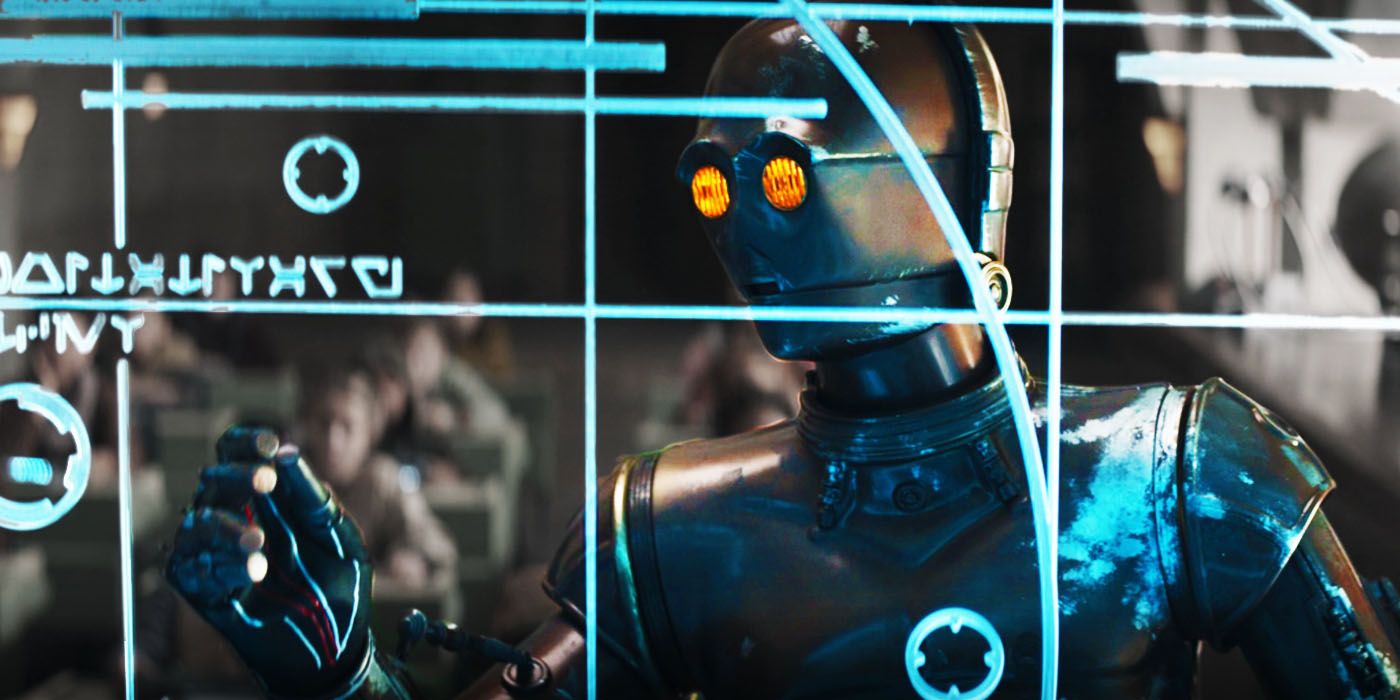If Baby Yoda paid a bit more attention in class, he might have caught a reference to Solo: A Star Wars Story in the latest episode of The Mandalorian. Season 2, episode 5, "The Siege," sees Mando leave his young ward at a school on Nevarro while he goes on a mission to destroy an Imperial base with Greef Karga and Cara Dune. While the Child is focused on using the Force to steal a classmate's cookies, the droid teacher gives a galactic geography lesson about Kessel and the Akkadese Malestrom.
Solo: A Star Wars Story was released in 2018 as the second of Disney's Star Wars spinoff movies. The film starred Alden Ehrenreich as a young Han Solo and explored the smuggler's origin story, how he met Chewbacca, and his first time flying the Millennium Falcon. Though the previous spinoff, Rogue One, was a box office hit that won critical acclaim, Solo left considerably less of a mark and became the first Star Wars movie to flop at the box office.
The Mandalorian, however, isn't afraid to acknowledge the more controversial elements of the Star Wars. "The Siege" not only brings midi-chlorians back to the forefront of the main plot, but also references Solo's portrayal of how Han made the Kessel Run in less than 12 parsecs. When Mando first enters the classroom, the teacher is asking children to name hyperspace routes through the galaxy, with suggestions including the Corellian Run and the Hydian Way. After Baby Yoda is dropped off and quickly loses interest in the lesson in favor of food, the teacher talks about Kessel and its surrounding system:
"The system also contains the Akkadese Maelstrom. The Maelstrom surrounds Kessel and its three moons... As the third moon of Kessel rotates the outer planet, you see the moon here travels in the same orbit."
If nothing else, Solo: A Star Wars Story at least solved a long-standing point of confusion within Star Wars canon. In Star Wars: A New Hope, Han Solo brags that the Millennium Falcon "made the Kessel Run in less than 12 parsecs," which sounds like a testament to the ship's speed - except a parsec is a measure of distance, not time (equivalent to about three light-years). In Solo: A Star Wars Story, Han and his friends are transporting a volatile substance via the Kessel Run when they encounter an Imperial blockade.
In order to escape the Empire, Han takes the extremely risky move of flying into the Akkadese Maelstrom - a highly volatile area of space that surrounds Kessel. Among the dangers within the Akkadese Maelstrom are large chunks of debris, an enormous gravity well called the Maw, and a gargantuan tentacled creature called the summa-verminoth that attempts to eat the Millennium Falcon. Han jettisons the ship's escape pod towards the summa-verminoth to distract it, explaining the unique shape of the ship's nose in the original trilogy. The shortcut through the Akkadese Maelstrom also explains why Han later uses a unit of distance rather than time to boast about his record-breaking trip through the Kessel Run.
Despite its poor box office performance, Solo was favorably reviewed and didn't attract the same ire from die-hard Star Wars fans that the previous movie, Star Wars: The Last Jedi, generated. If anything it had the opposite problems to The Last Jedi; rather than upending Star Wars tradition, it played things a little too safe and leaned hard into fan-service. Still, the Akkadese Maelstrom sequence is one of the most memorable moments in Solo, and it's perhaps no surprise that The Mandalorian - a show with its own fair share of giant monsters like the summa-verminoth - should include this small tribute to it.


